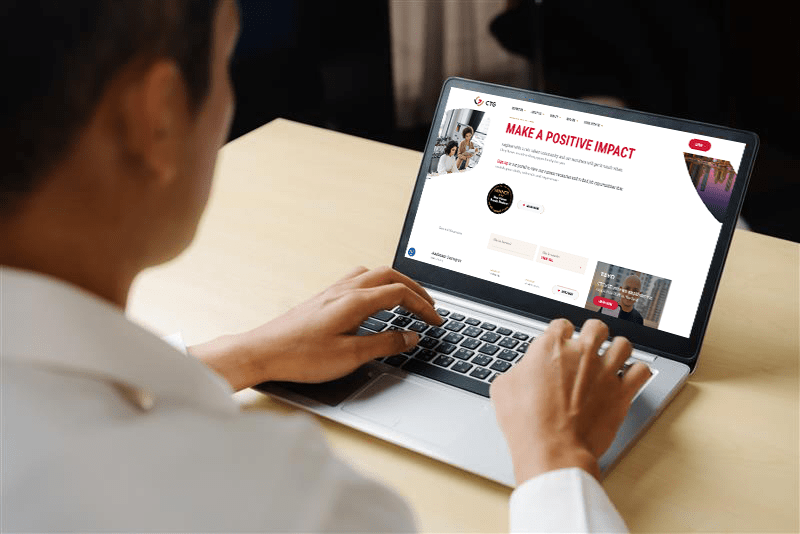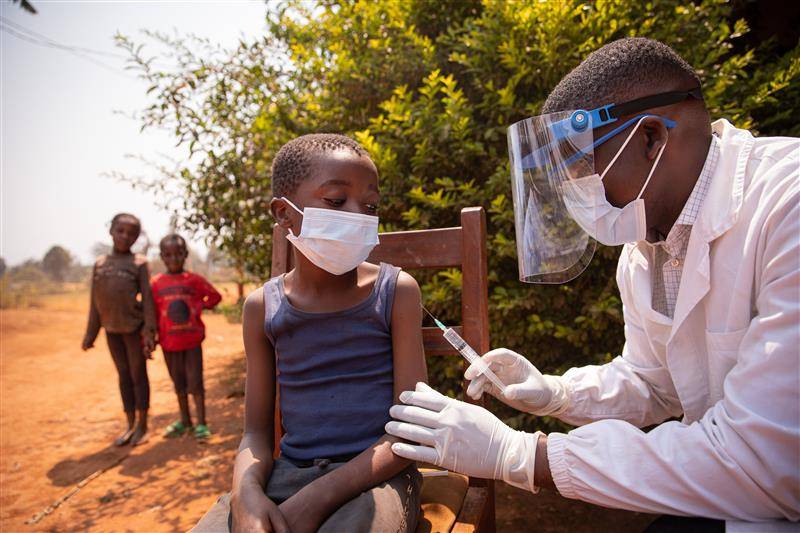Landing a Humanitarian Job in 2025: 8 Expert Tips to Boost Your Chances
2025 has hit the humanitarian sector hard. With aid cuts, projects shrinking and humanitarian agencies scrambling for funding and support, the outlook for those looking for humanitarian jobs can seem bleak.
The thing is, humanitarian work is more needed than ever. There are currently more than 307.8 million people in need and organisations are still looking for the right people to staff their projects around the world.
We spoke to Ajit Alex, CTG’s Rapid Recruitment and Deployment Team Lead and expert recruiter, about what you need to make your application stand out. Ajit has reviewed thousands of applications and understands what it takes to get the right people in the right places at the right time.
“These are some simple, simple tidbits,” Ajit says, “that I would share that would go a long way in enhancing the candidate’s experience and lowering the frustration levels as far as individuals are concerned.”
Whether you’re new to the sector or looking to advance your career, these practical insights will help strengthen your application and improve your chances of securing a role.

Review the full job description and assess how your experience aligns with the role.
1. Read the terms of reference closely
Job advertisements usually come with clear descriptions of the role and what the organisation is looking for in a candidate. On CTG’s website or Tayo talent portal, you’ll find that each job ad comes with position details that lay out exactly what a candidate needs to succeed in the job.
Ajit’s recommendations:
- Read through the entire description and note what matches your experience and capabilities
- Evaluate, carefully, whether your experience and capabilities match the needs of the position
2. Keep your CV clear, concise, and relevant
Your CV should tell a recruiter exactly why you are suited for the role – quickly. Recruiters spend only a few seconds scanning a CV before deciding whether to move forward, and most organisations, including CTG, use Applicant Tracking Systems (ATS) to help filter applications. Make sure your CV gets the attention it deserves by following Ajit’s recommendations.
Ajit’s recommendations:
- Limit your CV to two pages. Prioritise the most relevant and recent experience.
- Use clear formatting. Bullet points and section headings make your CV easier to read.
- Tailor your application by making it fit the job description.
- Ensure your experience and skills align with the job description
- Use key words from the description. For example, if the role requires “humanitarian logistics experience”, use this phrase instead of just “logistics experience”.
- Remove unnecessary details. Focus on humanitarian or related experience rather than unrelated roles, or make sure the relevance of an inclusion is 100% clear.
3. Highlight relevant field experience
Many CTG roles are based in challenging environments, and recruiters look for candidates with practical field experience. If you have worked in conflict zones, disaster response, or remote locations, ensure this is easy to see in your application – either on your CV, or in your interview.
“Clients are predominantly looking at the candidate’s experience and expertise,” Ajit says, “So probably a good suggestion that I could give candidates is whenever they’re talking about their experience, give examples. That would really go a long way!”
Ajit’s recommendations:
- Be specific when describing past experience: mention the location, nature of the project, and your responsibilities.
- Show your impact by explaining how your work contributed to the project’s success.
- Include technical skills and highlight your qualifications to show how your experience can benefit the project.

Highlight your field experience in conflict zones or remote settings, which is key for certain humanitarian jobs.
4. Follow application instructions carefully
A significant number of applications are rejected because of missed details. If a role requests a CV in PDF format, make sure to submit your CV in PDF format. If a cover letter is required, provide one that directly addresses the role.
Ajit’s recommendations:
- Before submitting, double-check the job requirements and any instructions in the job ad
- Confirm all the documents asked for in the ad are included
- Proofread your CV and submission for errors so you can present a polished application
5. Name your documents clearly
Ajit also emphasises a top tip that people don’t often consider: “Name your documents, especially your CVs and those kinds of things, in an appropriate manner that makes sense to the person downloading your file.”
Many times, recruiters download documents from portals like Tayo. If you upload your CV simply as “CV”, it becomes difficult for the recruiter to manage your application. You can make a good impression and improve your chances by naming your documents properly.
Ajit’s recommendations:
- Ensure each document is named clearly. For example, if you’re uploading or sending a copy of your bachelor’s degree, make sure the file name specifies ‘bachelor’s degree’.
- Add your initial and surname to all of your document names.
6. Keep your CTG profile updated
Many opportunities can come at short notice, and CTG recruiters regularly search their database for candidates. If your profile is not up to date, you may miss out on a suitable role.
Ajit’s recommendations:
- Add new qualifications, languages, or certifications
- Update your availability for deployment
- Ensure all contact details are correct
Ajit recognises that keeping profiles up to date can be difficult when you’re in a deep field area or working in an environment with limited connection. He suggests taking any and all opportunities to update your profile when they become available.
“Keep your contact details up to date whenever you go into the city. Check out the portals when and where you can. If your experience does match a particular role and if your contact details are correct, [recruiters] will try and reach you, if not by e-mail, at least via phone call. Because all the recruiters that I know – if a candidate doesn’t respond within 24 hours, what they do is they end up calling them.”
7. Prepare and practice for the interview
If you follow the above recommendations, you may be invited for an interview! This is your chance to expand on your abilities, experience and fit for the role. Careful preparation is key – it will help with nerves and ensure you’re ready to put your best foot forward.
Many humanitarian organisations use competency-based interviews to assess candidates, so it’s important to prepare concrete examples of how you’ve demonstrated key skills in previous jobs.
Ajit’s recommendations:
- Review the job description again and be ready to discuss how your skills and specific experiences align with the required competencies and responsibilities.
- Use the STAR method (Situation, Task, Action, Result) to structure your responses clearly and highlight the impact of your actions.
- Practice common questions. For roles in the humanitarian sector, it’s a good idea to prepare answers for questions on adaptability, resilience, and problem-solving in field environments.
- Some interviews require you to verify qualifications or provide additional references – make sure to have your documents on hand.

Your body language, energy, and manners leave a lasting impression during an interview.
8. Make the most out of your interview
Interviews can be demanding and nerve-wracking, but they’re designed to get to know you and get a sense of whether this is the best fit for everyone involved. But, remember that a few small courtesies can help you create the best impression and enhance your opportunity to showcase your skills and experience. Your body language, energy and manners can make a big impact on a recruiter’s perception of your candidacy.
Ajit’s recommendations:
- Be honest, above all. If you’re asked about a scenario and you don’t have matching experience, you can say “I haven’t experienced this in my career, or in the last couple of organisations I worked in.”
- It’s natural to feel nervous, but excessive movement like tapping your fingers and shifting in your seat can make you appear unsettled. Practice keeping your hands relaxed and still.
- Make steady, natural eye contact to show that you’re engaged and listening. This doesn’t mean staring intensely into the interviewer’s eyes (or the camera!), but ensuring that you’re connecting with the interviewer(s).
- Check your body language: sit up straight with a relaxed but attentive attitude, and try not to cross your arms or take on a defensive posture.
- Match your energy to the conversation – humanitarian work often requires calm and composure, and interviewers will be looking for signs that you can handle the pressure.
- If you’re doing a virtual interview, switch your camera on and make sure you’re framed up properly. If you’re in an area with connectivity issues, be honest with your interviewers and explain why your camera is switched off.
Start your application with CTG
CTG supports humanitarian projects in complex environments by connecting skilled professionals with critical missions. By refining your application and following these best practices, you can improve your chances of securing a role that makes a difference.
Ajit knows it can be hard, but he wants to encourage candidates to keep at it. “Keep pushing. Keep trying. Something or the other will work out.”
Ready to take the next step? Visit CTG’s job site and create your Tayo profile today to stay connected with new opportunities and continue making a meaningful impact, one opportunity at a time.
